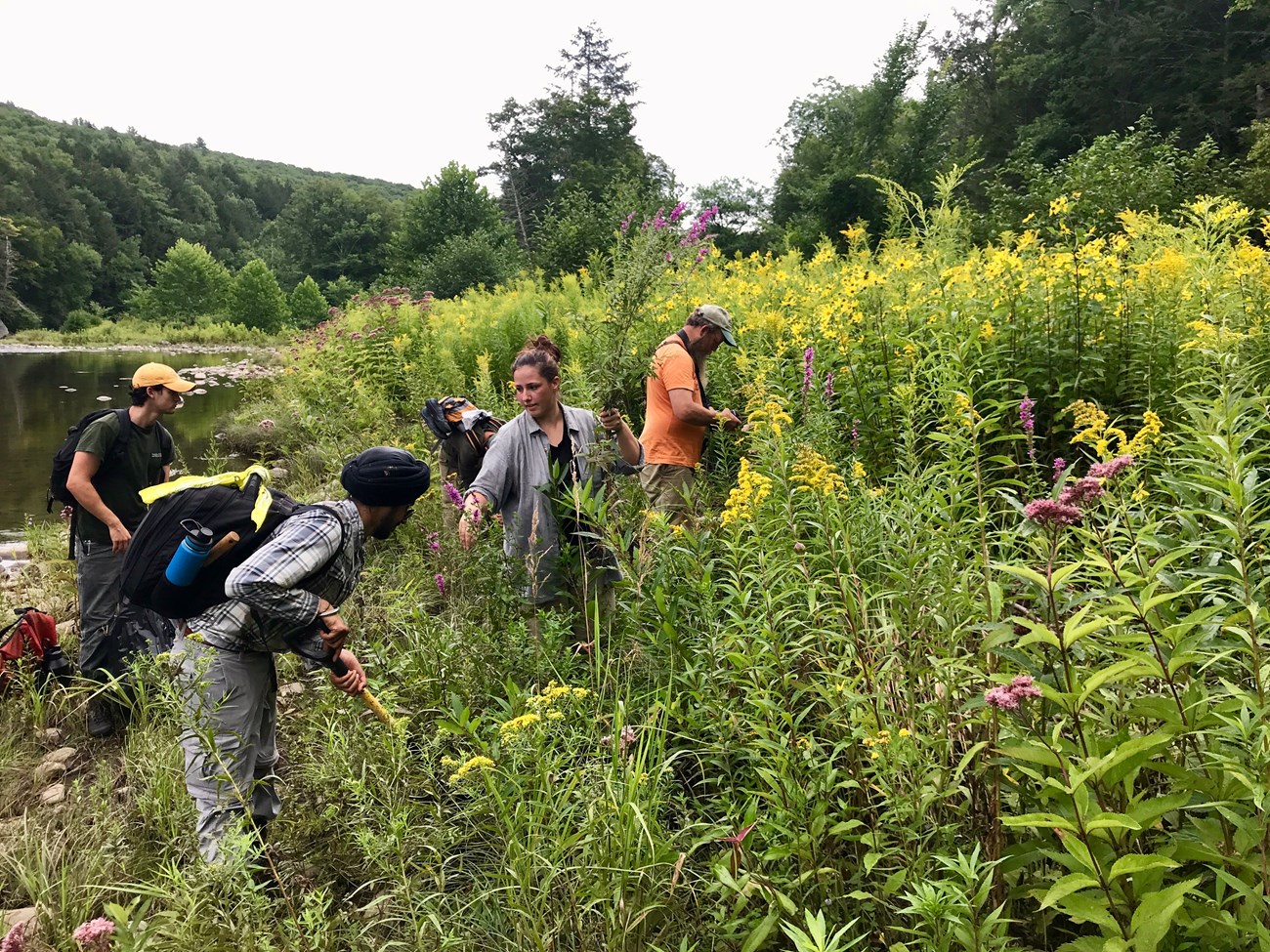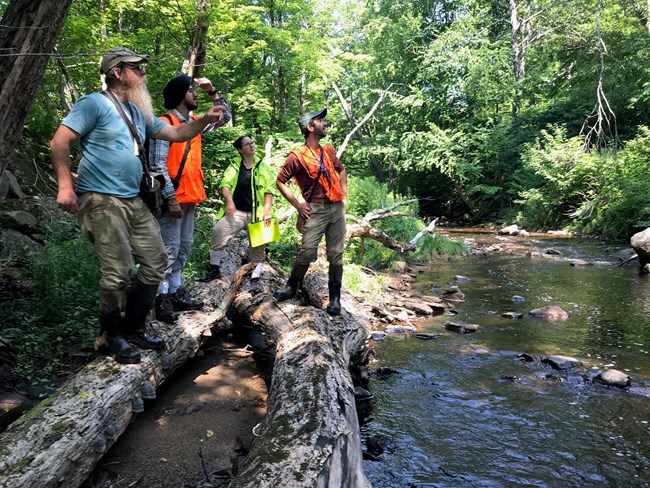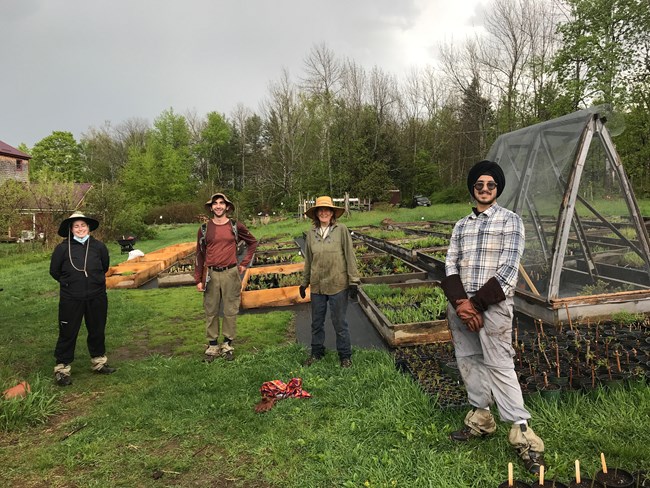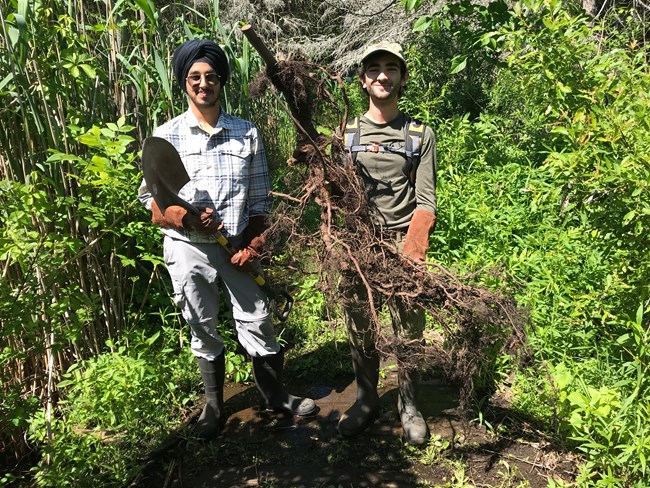Last updated: January 21, 2022
Article
R&R on the Westfield Wild and Scenic River

Meredyth Babcock
Content submitted by: Westfield River Committee
The Wild & Scenic Westfield River Remove & Restore (R&R) project is working to slow the spread of invasive plants in our watershed. We believe it is vital to see and track success, develop partners, and enjoy the resulting increased diversity of native vegetation. Starting at the headwater streams with a goal to R&R: “Remove & Restore,” our small but mighty committee is seeing our efforts bear fruit. Winterberry, Serviceberry, Spicebush, and Highbush blueberry, which were strangled last year, are now offering their bounty to birds and all manner of wildlife.

Meredyth Babcock
Volunteer and project coordinator Meredyth Babcock observed, while walking small headwater streams, that aggressive non‐native plants were entering at road crossings and making their way downstream. She noted with interest that these invasive species were colonizing much more slowly than they do in more trafficked areas, presumably because they encounter rich and healthy ecosystems that can hold their ground.
Summer interns and our environmental consultant John Burns began walking the headwater stream in the Westfield River Watershed each spring, mapping not only what should be removed but what native plants might be restored. Tracking the recolonization of surrounding vegetation gives us great joy, and if we don’t see it, we know that replanting will be necessary.

Meredyth Babcock
In 2021 we launched a plant/pollinator interactions survey to better advise landowners & stakeholders what plants have the highest value for pollinators, should there be a need for replanting. Intern, Nicolas Pietroniro created a project on the app iNaturalist to enable volunteers to add data in the future. This project is centered at Wing & A Prayer Nursery in Cummington, MA where native plants are carefully raised for sale for home gardens and restoration projects.
The 2021 interns, Maninder, Nicholas and Brianna, learned not only the skills needed to remove and properly dispose of invasive plants (captured in our Walkin' the Watershed video series), but the importance of reflecting on the native flora and fauna that flourish after their removal. They began to see insects visiting the blossoms or crawling out from their overwintering locations. They learned to share their discoveries with landowners, family and community members who joined us on our many volunteer workdays.
"Before this internship I never even got close to a bug," Maninder marveled one day. "Now looking for them and seeing what they need to survive is one of my favorite things to do.

Meredyth Babcock
For river stewards across the land the task before us can feel overwhelming. Here on the Wild & Scenic Westfield River we practice Remove & Restore at every opportunity, improving one brook at a time. We listen for the sound of our native bumble bees in flight, and take time in our day to watch the dancing brook lapping at its restored banks, and are filled with peace, pride, and resolve.
Learn more about our work: see Mani’s video about his mustard mission and John Burn’s video about headwater streams as refugia, along with many others.
If you find yourself in Western Massachusetts, join us on the river! Email the Westfield River Wild and Scenic Advisory Committee: westfieldriver@gmail.com
